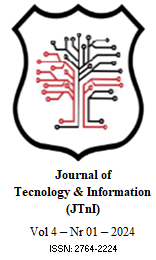Recommendations for managing design knowledge inside a big brazilian digital fintech
Keywords:
agility, digital bank, product management, financial technologyAbstract
This study maps the main agile challenges, solutions, stakeholders and activities in the work of designers in a large national digital financial institution, listing recommendations for creating a knowledge repository based on unsystematic review and group dynamics; and proposes a flowchart model illustrating this entire process, aiming to manage the interests of the evaluated team and control the quality of design in the participating company. The results are achieved when, based on the totality of the project results, recommendations are suggested to address the main problems raised, including those already given by the participating professionals, as well as those provided by the research itself; and in proposing a repository of activities, challenges, solutions and stakeholders, here called a crisis management model in the agile context of designers and managers.
References
Asana. 2022. Gestor de produto vs. gestor de projeto: em que diferem?. Disponível em: <https://asana.com/pt /resources/product-manager-vs-project-manager>.
Banco Central do Brasil [BACEN]. 20??. Disponível em: <https://www.bcb.gov.br/estabilidadefinanceira/fintechs>.
Bergen, E. van; Gokgoz, E.; Singh, G.; Martin, J. D.; Sá, M. Ferreira de; Melgarejo, M. 2012. Design the New Business. Disponível em: <https://www.youtube.com/watch?v=5ppKcRGHPyQ>.
Brown, T. 2020. Design Thinking: uma metodologia poderosa para decretar o fim das velhas ideias – 1ed – Editora Alta Books, Rio de Janeiro, RJ, Brasil.
Bürdek, B.E. 2010. Design: História, teoria e prática do design de produtos. Freddy Van Camp. Blucher, São Paulo, SP, Brasil.
Cruth, M. 2022. Discover the Spotify model. Disponível em: <https://www.atlassian.com/agile/agile-at-sc ale/spotify>.
Doerr, J. 2019. Avalie o que importa: Como o Google, Bono Vox e a Fundação Gates sacudiram o mundo com os OKRs. – 1ed – Alta Books, Rio de Janeiro, RJ, Brasil.
Ferrari, A. 2021. Maiores bancos digitais têm 82 milhões de contas em 2021. Disponível em: <https://www.poder360.com.br/economia/maiores-bancos-digitais-tem-82-milhoes-de-contas-em-2021/>.
Fonseca, N. R; Castor, E. C. S.; Martins, E. F.; Nóbrega, M. J. R. 2023. Gestão de projetos ágeis: um levantamento bibliométrico entre os anos de 2017 e 2021. Revista Tecnológica da Universidade Santa Úrsula. n1, v6.
Fisher, R.; Ury, W.; Patton, B. 2013. Como chegar ao sim: Como negociar acordos sem fazer concessões?. Sextante, Rio de Janeiro, RJ, Brasil.
Gonzalez, M.E.Q.; Haselager, W.(Pim)F.G. 2002. Raciocínio Abdutivo, Criatividade e Auto-organização. Cognitio, São Paulo, nº 3, nov. 2002, p. 22-31.
Hanington, B.; Martin, B. 2012. Universal Methods of Design: 100 Ways to Research Complex Problems, Develop Innovative Ideas, and Design Effective Solutions. Rockport Publishers, Beverly, MA, USA.
Knapp, J.; Zeratsky, J.; Kowitz, B. 2017. Sprint: o Método Usado para Testar e Aplicar Novas Ideias em Apenas Cinco Dias – 1ed. – Intrínseca, Rio de Janeiro, RJ, Brasil.
Kniberg, H.; Ivarsson, A. 2012. Scaling Agile @ Spotify with Tribes, Squads, Chapters & Guilds. Disponível em: <https://blog.crisp.se/wp-content/uploads/2012/11/SpotifyScaling.pdf>.
Lotz, M. 2018. Waterfall vs. Agile: Which is the Right Development Methodology for Your Project? Disponível em: <https://www.seguetech.com/waterfall-vs-agile-methodology/>.
Mah, P. M., Skalna, I., Muzam, J. & Song, L. K. 2022. Analysis of Natural Language Processing in the FinTech Models of Mid-21st Century. Journal of Information Technology and Digital World, 4(3), 183-211. doi:10.36548/jitdw.2022.3.005
McKinsey. 2021. The future of work after COVID-19. Disponível em: <https://www.mckinsey.com/featured-insights/future-of-work/the-future-of-work-after-covid-19>.
Mello, F.H. de. 2018. Modelo Spotify: como a empresa organiza seus times de produto. Disponível em: <https://www.qulture.rocks/blog/como-a-spotify-organiza-se us-times-de-produto>.
Nijs, D. 2019. In Advanced Imagineering: Designing Innovation as Collective Creation / Diane Nijs (Ed.). Edward Elgar Publishing, Cheltenham, Gloucestershire, UK.
Nussbaum, B. 2011. Design Thinking Is A Failed Experiment. So What’s Next?. Disponível em: <https://www.fastcompany.com/1663558/design-thinking-is-a-failed-experiment-so-whats-next/>.
Pedroso, F. 2020. Ágil, Híbrido ou Preditivo? Uma Planilha de Apoio à Tomada de Decisão. Disponível: <https://www.linkedin.com/pulse/%C3%A1gil-h%C3%ADbrido-ou-preditivo-uma-plan ilha-de-apoio-%C3%A0-fabiano/?originalSubdomain=pt>.
Pereira, W. 2021. #31: What's the impact of fintechs in Brazil?. Disponível em: <https://wfintechs.subst ack.com/p/impact-31?s=r>.
PMI. 2013. A Guide to the Project Management Body of Knowledge (Pmbok Guide) – 5ed – Project Management Institute, 1 ago. 2014.
PMI. 2017. A guide to the Project Management Body of Knowledge (PMBOK guide) – 6ed – Project Management Institute, 22 set. 2017.
Project Practical. 2023. 10 Best Practices for Effective Communication in Projects. Disponível em: <https://www.projectpractical.com/10-best-practices-for-effective-communication-in-projects/>.
Rother, E.T. 2007. Editorial: Revisão sistemática X revisão narrativa. Acta Paulista de Enfermagem, 20(2), 1-2.
Setiawan, K.; Maulisa, N. 2020. The Evolution of Fintech: A Regulatory Approach Perspective. In 3rd International Conference on Law and Governance (ICLAVE 2019) (pp. 218-225). Atlantis Press.
Schein, E. 2009. Cultura Organizacional e Liderança. ATLAS Editora, São Paulo, SP, Brasil.
Twidale, M.; Hansen, P. 2019. Agile research. First Monday, 24, 1-7.
Walsh, J.P.; Ungson, G.R. 1991. Organizational Memory. The Academy of Management Review, 16(1): 57-91.












